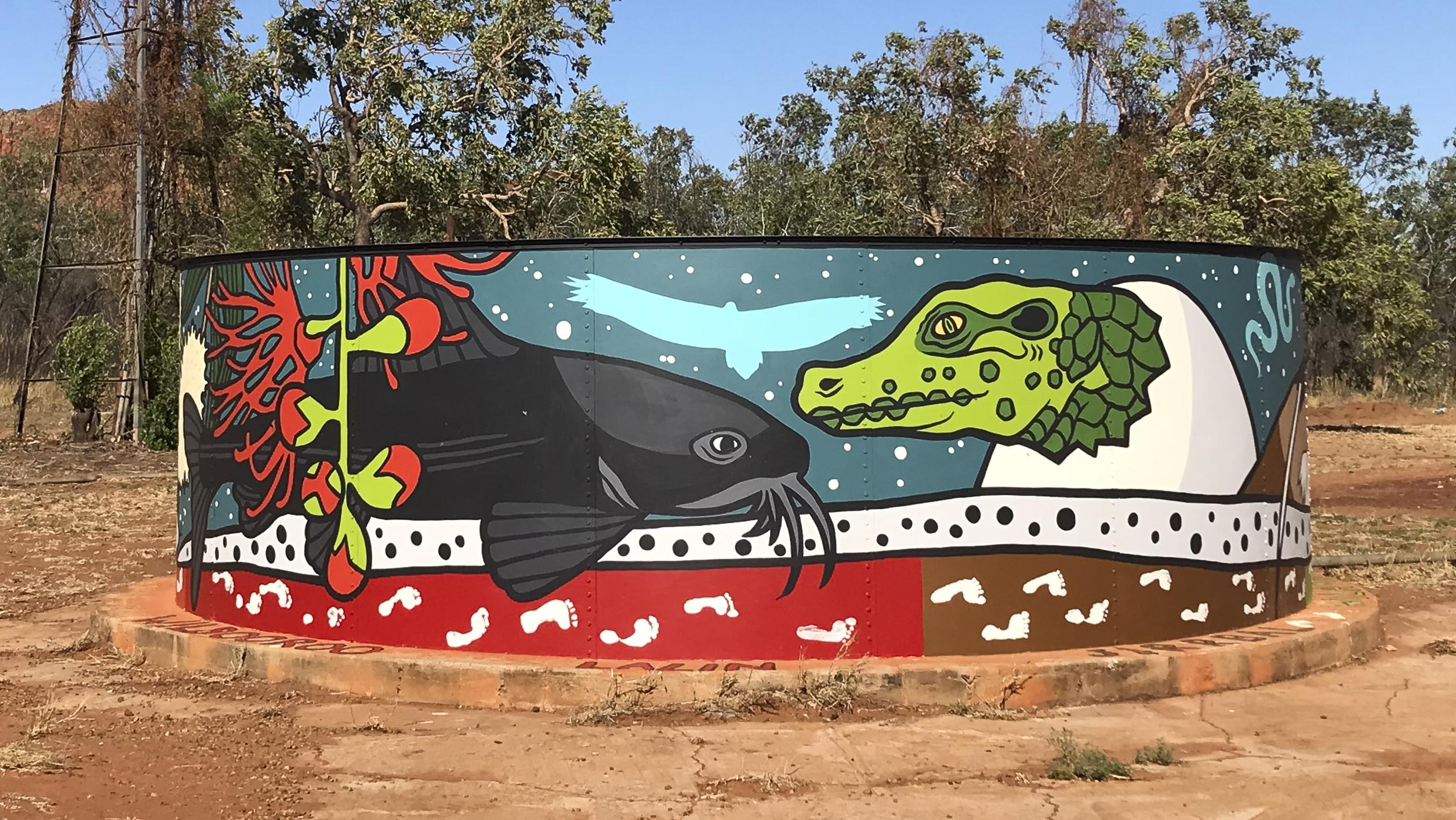2 February 2022
Authors: Jane Thomas, Sarah Laborde and Sue Jackson, Northern Australia Environmental Resources Hub, National Environmental Science Program
Indigenous water needs in the Martuwarra/Fitzroy River
The Martuwarra (Fitzroy River) in Western Australia has sustained Indigenous people and their societies for millennia. A research project co-designed with Traditional Owners of the Martuwarra has used art and storytelling works to depict Aboriginal and western scientific ways of understanding and managing water.
The Fitzroy catchment makes up a large part of the West Kimberley National Heritage Place, listed for its outstanding cultural and natural values. Its waters – including rivers, floodplain wetlands, springs and other waterbodies including aquifers – are of great importance to Aboriginal people of the catchment.
The research project led by scientists at Griffith University, together with Traditional Owners of the Martuwarra, has developed powerful new insights into different ways of knowing and valuing water. In addition to generating conventional research outputs, the project used art and storytelling works to depict Aboriginal and western scientific ways of understanding and managing water flows.
These differences need to be understood if water planning is to succeed in this region. The works provide detailed accounts of knowledge held by Traditional Owners of the Martuwarra, its waters, and its reciprocal relationships with people, plants, animals and ancestral beings – relationships that are central to the environmental sustainability of the catchment. Conceptual models were developed to improve water governance.
The beautiful Nyikina seasonal calendar is a poster about the cycle of life that is depicted in story and underpinned by customary law in Nyikina Country.
A Nyikina seasonal calendar. Copyright Walalakoo Aboriginal Corporation.
The calendar inspired a mural in the remote Kimberley community of Jarlmadangah Burru. This artistic collaboration between the community and artist Mel McVee features animal species chosen by Nyikina Traditional Owners that are key species in their Woonyoomboo creation story.

Community mural in Jarlmadangah to celebrate the Nyikina seasonal calendar. Photo: Sarah Laborde.
In an award-winning short film called ‘Veins of the Country’, senior Gooniyandi artist Mervyn Street shares his art and storytelling about the waters of the Martuwarra and Warlibiddi (Margaret River), and the waters’ vital significance to Country and people’s lives.
Senior Gooniyandi artist Mervyn Street. Photo: Sarah Laborde.
Just like a person, the Martuwarra needs human connection and care to sustain its health and ensure its vitality. The project also provides recommendations to water managers of the Western Australian government who are engaged in a water-allocation planning process.
This project was led by Professor Sue Jackson of Griffith University and supported through funding from the Australian Government’s National Environmental Science Program through its Northern Australia Environmental Resources Hub.
Want to know more about the Resilient Landscapes Hub's activities and our research into practical solutions to environmental problems? Stay informed about activities, research, publications, events and more through the Hub newsletter.